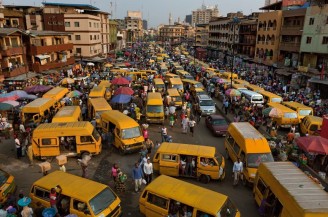Zigurat Global Institute of Technology
Blog / Leadership & Transformation
Smart City Solutions That Are Leading the Way
Categories

This article rounds up some of the latest smart city solutions and gadgets that were presented at the beginning of the year at CES (Consumer Technology Association) event in Las Vegas.
Before the global lockdown became our new reality, CES - the main international technology fair - presented the world with a surprise box of new devices, trends and digital innovations. It opened its doors at the beginning of January in Las Vegas and it was there that new technologies, such as flexible frameless televisions with Mini-LEDs; robots such as FaceMe (from the specialist Cyberlink) that determine the age, sex and emotional state of people in order to send them personalized advertising; cars with solar panels (presented by the Fisker company); lasers that allow mosquitoes to be hunted; or even a remote-controlled lifesaver, Dolphin 1 from OceanAlpha, among others were presented. These are some of the projects that became the protagonists of the event.
The event also highlighted the issues related to Smart Cities and with it, the smart city solutions and "gadgets" thought and designed to achieve their implementation and help cities to be more digital, sustainable and safe.
Digital Water Management
One of the sectors that has begun to implement the technologies of the moment in its work processes is hydraulics. Artificial intelligence, big data, Internet of things are some of the innovations that form part of the water 4.0 paradigm. Its aim is to promote sustainability and achieve better efficiency in the sector, but also to achieve reuse and combat scarcity.
As a whole, reducing the effects of climate change and transforming all the processes in this sector to help shape the Smart Cities. According to Xavier Torra, President of the Eurecat Technology Centre, "the trend in the water sector is marked by the irruption of automation, connectivity and intelligence".
At CES, one of the most smart city solutions presented was precisely related to water management. Specifically, it is a device with consumption and leak detection sensors developed by Protectonnect. According to this company, one out of every three liters of water in the world is lost through leaks, and as a solution, they offered this technology that serves both homes and entire cities. A mobile application is in charge of informing in real time if there is a problem, because it detects the leakage instantly, and warns about the water consumption costs.
In Spain, the emphasis is also being placed on the introduction of innovations in the water field where the IoT has a strong presence. An example of the integration of this technology is the alliance between Telefónica and Idrica to promote GoAigua, a system for digitalizing both the operation and maintenance of companies. It is also intended to increase the solutions based on NB-IoT, LTE-M and 5G Massive IoT. The first of these is responsible for monitoring the consumption of water by citizens and for keeping possible losses and irregularities under control.
NTT Data Company's Everis also emphasizes the importance of sensor technology, remote sensing and the use of IoT along with artificial intelligence and Big Data. Factors that make the full development of the Smart Cities possible!
Citizen Emergency Response Devices
There are many areas in which technological innovations and new digital models are needed to help improve the cities. Some aspects are more relevant than others, but safety must not be forgotten under any circumstances. It is one of the worst managed factors due to poor planning and lack of prevention parameters, among other things.
When it comes to turning a city into a smart one, it is important to integrate security that allows for a global and transversal vision of the possible problems and risks based on data collection and analysis. In this regard, two gadgets were presented at ESC whose function, among other things, is to improve security and deal with emergency situations much more effectively.
FITT360 LIVES is a "wearable", a kind of necklace, which has three integrated cameras that allow making 360º video calls and therefore, immediately sharing with up to four people what is happening around it by means of audio and video. For cities, it can be very useful to act faster in cases where, for example, health or police services are required.
Another highlight was Cepton, a device developed in the US by industry veterans that is able to detect, track and organize both object and behavioral data with high accuracy. Its use covers not only traffic optimization and citizen planning but also improving public safety and providing instant responses to emergency situations. According to the company, "Cepton's patented technology, based on MMT™, enables reliable, scalable and cost-effective solutions that provide long-range, high-resolution 3D perception for intelligent applications.
IoT and Traffic Management
Another common concern when talking about the development of Smart Cities is the issues related to transport and its infrastructure. That is why devices such as IoT RADAR came to CES with the intention of achieving that great challenge that Smart Cities face. In this case, the role it plays is to monitor in real time not only the number of vehicles on the road but also their speeds and accidents. And all with an accuracy of 95%. Collecting this data can be of great help to navigation systems and can be used in terms of surveillance, safety or collision warnings.
In this same area we also find initiatives by companies such as Toyota, which exhibited its plan to create a city of the future in Japan, specifically on Mount Fuji. A 100% Intelligent City called Woven City that will be characterized by being completely connected and managed by resources such as solar energy and hydrogen fuel cells. The city was presented as a test laboratory to be used, if all goes well, as a base for future projects. It is intended that both permanent residents and researchers will live in it to test and continue developing technologies such as robotics, personal mobility, smart homes, etc. in an environment that replicates reality.
The Master's in Global Smart City Manager can provide you with the skills you need to develop projects such as those mentioned above and to understand the new technologies and innovations that are enabling the current growth of Smart Cities. After finishing the program, you will be able to draw your own conclusions, uncover new ideas on how to manage a city and work on your own smart city solutions.
Discover how smart cities bring together infrastructure and technology and the growing business opportunities in the field!




